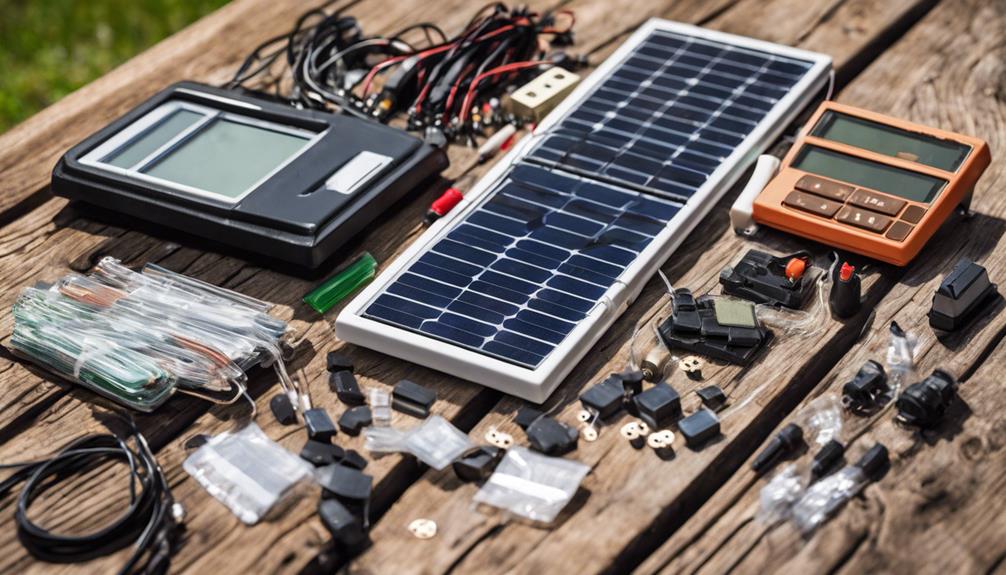
What is a PV Array?
A PV array, or photovoltaic array, is a collection of solar panels that convert sunlight into electricity. These arrays are fundamental components of solar energy systems, providing a sustainable and renewable source of power for residential, commercial, and industrial applications. Each solar panel in the array consists of photovoltaic cells that generate direct current (DC) electricity when exposed to sunlight. The efficiency of a PV array largely depends on the quality of the solar panels, their orientation, and the amount of sunlight they receive throughout the day.
How PV Arrays Work: The Science Behind Solar Energy
Understanding how PV arrays function requires a basic grasp of photovoltaic technology. When sunlight strikes the solar cells, it excites electrons, creating an electric current. This DC electricity is then converted into alternating current (AC) by an inverter, making it usable for home appliances and the electrical grid. The efficiency of the PV array is influenced by factors such as temperature, shading, and the angle of sunlight. High-quality panels can achieve conversion efficiencies above 20%, making them an effective way to harness solar energy.
The Benefits of Installing a PV Array
Investing in a PV array offers numerous benefits. First and foremost, it provides a clean and renewable source of energy, significantly reducing greenhouse gas emissions. Additionally, installing a solar array can lower energy bills, as homeowners can generate their own electricity and reduce reliance on grid power. Many governments also offer incentives, such as tax credits and rebates, to encourage solar adoption. Furthermore, a well-installed PV array can increase property value, making it a smart long-term investment.
Types of PV Arrays: Which One is Right for You?
There are several types of PV arrays to choose from, each suited to different applications and needs. The most common types include grid-tied systems, off-grid systems, and hybrid systems. Grid-tied systems are connected to the local utility grid, allowing users to sell excess power back to the grid. Off-grid systems, on the other hand, operate independently and typically require battery storage to ensure a consistent power supply. Hybrid systems combine both approaches, offering flexibility and reliability. Selecting the right type of PV array depends on your energy needs, location, and budget.
Factors to Consider When Choosing a PV Array
When selecting a PV array, several key factors should be taken into account to ensure optimal performance and return on investment. First, consider the size of the array, which should be based on your energy consumption and available roof space. The orientation and tilt of the panels also play a crucial role in maximizing sunlight exposure. Additionally, the efficiency and warranty of the solar panels, as well as the reputation of the manufacturer, should be thoroughly researched. Lastly, it’s important to evaluate local regulations, potential incentives, and installation costs to make an informed decision.
Maintenance and Care for Your PV Array
To ensure the longevity and efficiency of your PV array, regular maintenance and care are essential. Most solar panels require minimal upkeep, but periodic cleaning and inspections can help identify any issues early on. Dust, debris, and bird droppings can accumulate on the panels, reducing their efficiency. It’s recommended to clean the panels with a gentle soap and water solution or hire a professional service. Additionally, monitoring the system’s performance through a solar monitoring app can provide insights into energy production and alert you to potential problems.
Common Myths about PV Arrays Debunked
Despite the growing popularity of solar energy, several myths about PV arrays persist. One common myth is that solar panels don’t work well in cloudy or rainy climates. In reality, PV arrays can still generate electricity on cloudy days, although their efficiency may be reduced. Another misconception is that solar energy is too expensive for the average homeowner. With decreasing costs of solar technology and various financing options available, many homeowners find that installing a PV array is more affordable than they initially thought. Finally, some believe that solar panels require too much maintenance; however, as mentioned previously, they are relatively low-maintenance systems.
The Future of PV Arrays: Innovations and Trends
The future of PV arrays is bright, with numerous innovations and trends on the horizon. Advancements in solar technology, such as bifacial panels that capture sunlight from both sides, and building-integrated photovoltaics (BIPV) that blend solar cells into building materials, are paving the way for more efficient systems. Additionally, the integration of energy storage solutions, like batteries, allows homeowners to store excess energy generated during the day for use at night or during outages. As renewable energy continues to gain traction, the demand for PV arrays is expected to rise, making solar power a cornerstone of sustainable energy solutions.
In conclusion, PV arrays represent a powerful and sustainable technology that offers a myriad of benefits for both individuals and the environment. Understanding how they work, the types available, and the factors to consider when selecting an array can empower homeowners and businesses to make informed decisions about solar energy. As innovations continue to evolve and the world shifts toward renewable energy, investing in a PV array could be one of the most impactful decisions for a greener future.





